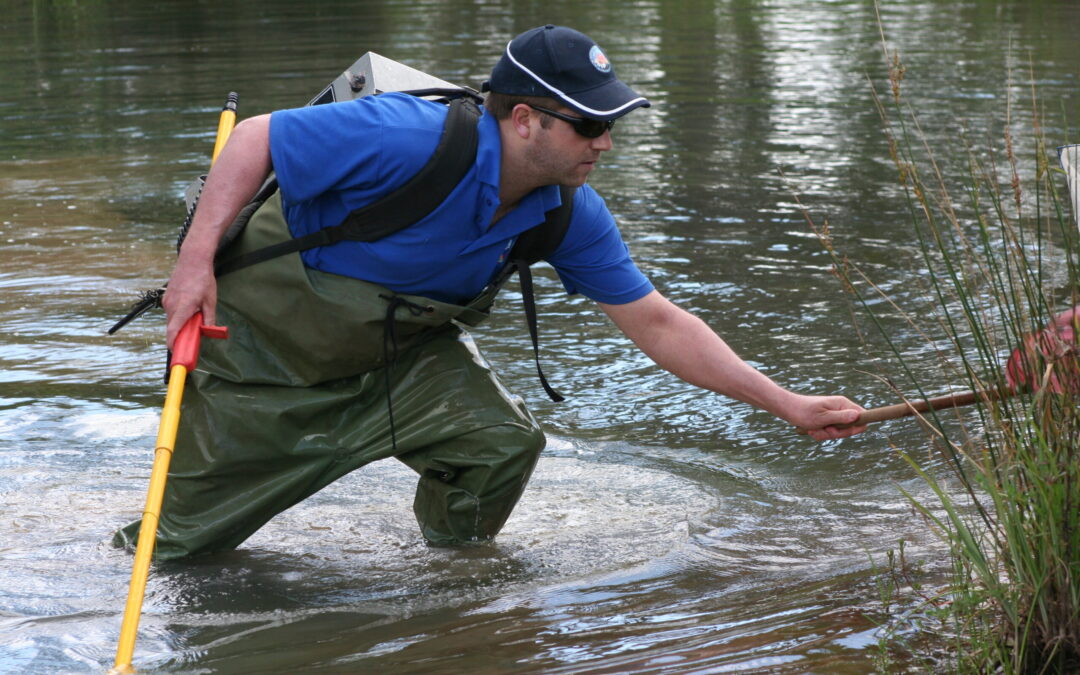Locals can learn more about the Margaret River’s unique fauna and fish from a leading river researcher at the next Friends of Wooditjup Bilya event hosted by Nature Conservation Margaret River Region.
Associate Professor Stephen Beatty, the deputy director of the Centre for Sustainable Aquatic Ecosystems at Murdoch University, will visit the region to host a free guided walk along banks of the Margaret River where he’ll discuss the waterway’s unique wildlife on Thursday, June 6 from 9.30am.
That will be followed by a volunteer conservation busy bee as participants get stuck into revegetation work along the foreshore of the river, concluding at 12.30pm. This event – Unveiling Aquatic Wonders – is free but numbers are limited, and registrations are essential HERE. Children must be accompanied by a parent and must be over the age of 12.
Professor Beatty said he’ll discuss and showcase “some of the wonderful but unheralded aquatic fauna” of south-western Australia including within the Wooditjup Bilya. He’ll also touch on the past and future threats they face and some of the new research that’s underway to help mitigate the threats they face.
“Freshwater ecosystems occupy a tiny fraction of the Earth’s surface but hold exceptional levels of biodiversity,” he says. “And south-western Australia houses the highest proportion of endemic fish in Australia, which are known to be great consumers of nuisance midge and mosquitos.
“Unfortunately, we have the highest proportion of threatened endemic fishes in the country. We need to better appreciate these wonderful animals and do more to help address the multiple threats they face. I’m excited to be able to meet on the banks of Wooditjup Bilya to show the community some of these fauna and share recent research we are undertaking to tackle the threats they face.”
It is the latest monthly event in Nature Conservation’s Friends of Wooditjup Bilya (Margaret River) program, which features a packed 12-month calendar of gatherings to inspire and educate locals about our iconic waterway. Held on the first Thursday of the month, each event includes a different guided excursion followed by hands-on conservation work so volunteers can help make a real difference in the catchment.
Program coordinator Lauren Scanlon said her aim was to inspire locals to become stewards for the Margaret River as it faces threats including weeds, tourism and recreation pressure, climate change and reduced flow, which is down by more than 50 per cent based on historical data.
But she said the good news is that there are still some areas of near-pristine environment along the river, while major wins have included more than 50km of foreshore fencing to prevent stock access, priority revegetation, two fishways, significantly improved dairy effluent and stormwater management, water recycling to reduce pumping from the river, and the prevention of feral goldfish establishing in the river.
“There’s a lot to love about the Wooditjup Bilya and we are so fortunate to live alongside it,” she said. “But that comes with a responsibility to act as stewards and ensure we are a positive influence. If we understand our river’s values and threats, we can make sure that our actions improve the health of the river.”
Ms Scanlon said the next Friends of Wooditjup Bilya event was an amazing opportunity for locals to meet Professor Beatty, who helped design local fishways to help fish and lamprey migration and has done extensive research into threatened fish species and lampreys in the Margaret River.
More Friends of Wooditjup Bilya events are planned for the coming months for locals to learn more about the Margaret River, hosted by cultural custodians, scientists or local experts. This program is generously funded by the Shire of Augusta-Margaret River through the Environmental Management Fund.

